When our founding fathers began outlining our government they looked back to the ancient democracies of Greece and Rome. After gaining Independence from England in 1776, political pride spilled over into architecture and interiors. It was known as Federal style which was popular from about 1780 until 1820. This neo classically based style had already become very popular in England where it was known as Georgian style in honor of the British monarchs. The name was changed in the states to be more politically correct. Day 17 Federal Georgian Style
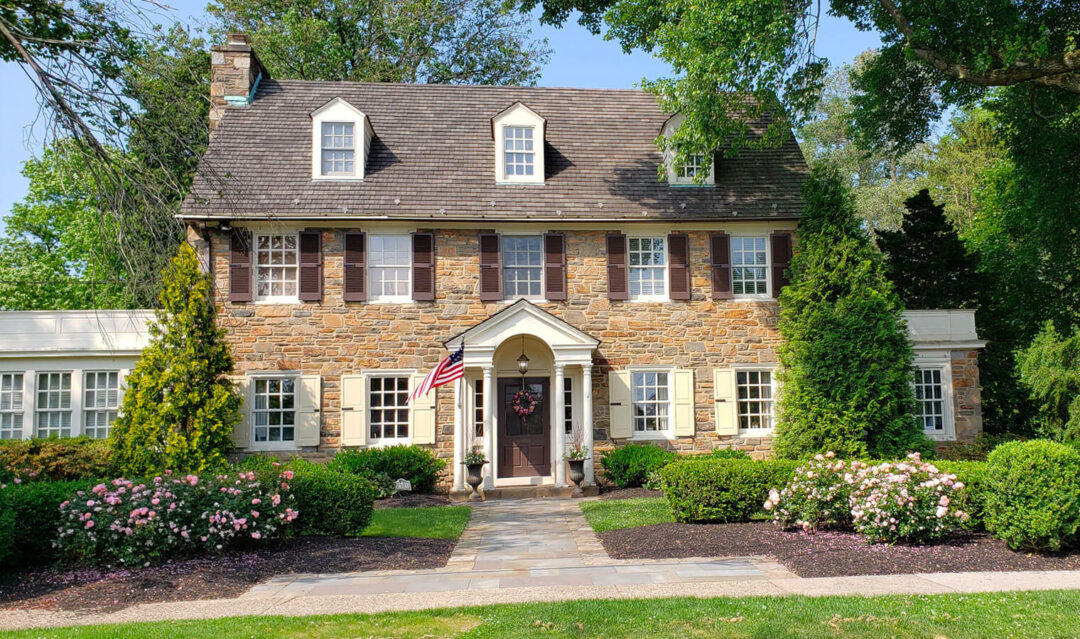
Day 17 Federal Georgian Style
Most of the architecture and furniture designs of this time can be traced back to Robert Adam, a Scottish architect, furniture and interior designer. He is largely accredited as being the first to integrate an entire rooms motif.
In Adam’s designs, everything from the rug to the ceilings, to the furniture would match in style. He was of course hired by well to do families. A diagram of details shown below was made for Derby House in Grosvenor Square, London. Sadly, the house was demolished in 1861.
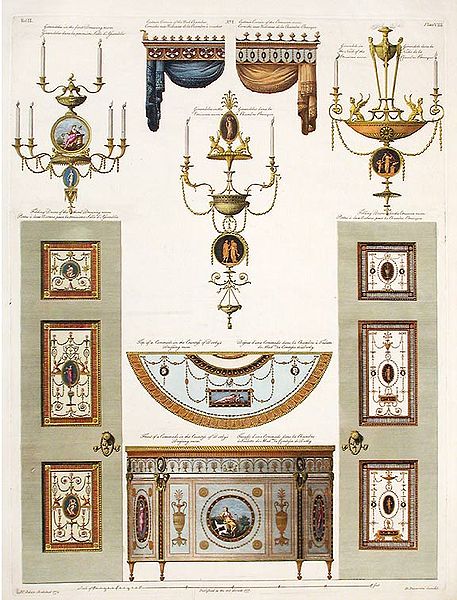
Federal style is about symmetry and balance. Oval and circular rooms were popular.
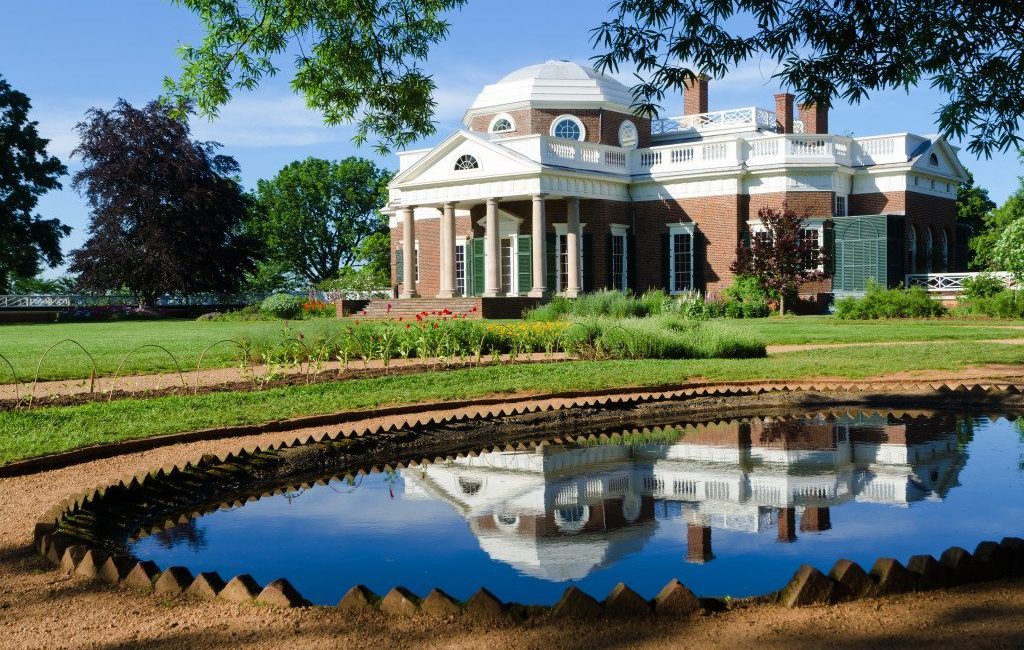
Ornamental motifs such as festoons, swags and urns decorated walls, doorways, mantles and most spectacularly, ceilings. Here are two original engravings done by Adam’s.
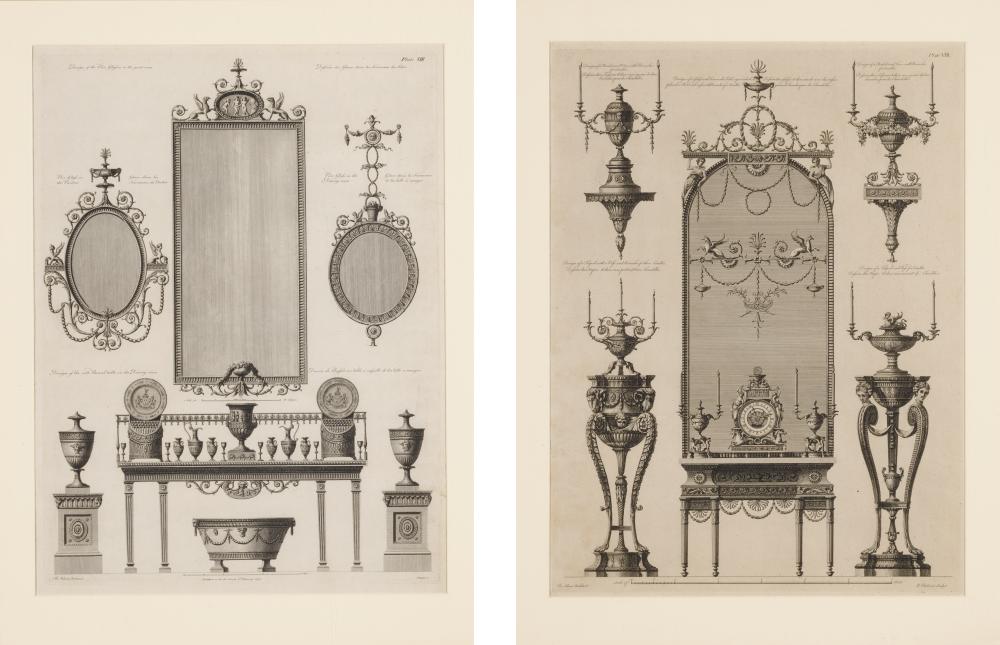
The ceilings were painted in a polychrome fashion meaning “The practice of decorating architectural elements, sculpture, etc., in a variety of colors”.
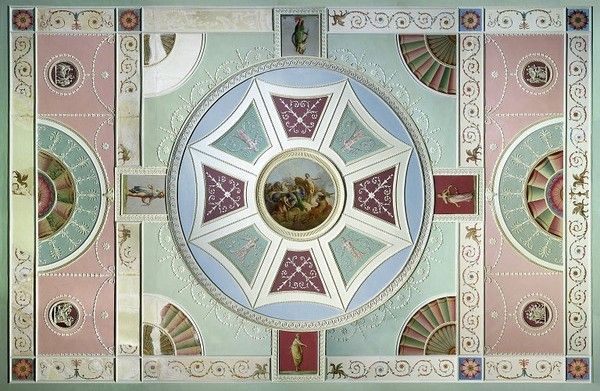
Here is a closer look at a Robert Adam ceiling with classical motifs in plasterwork and painting in oil on canvas-backed paper which was completed in 1771. As you can see pastel colors such as soft greens, yellows and blues were favored, but deep sapphire, crimson, and emerald were also widely used.
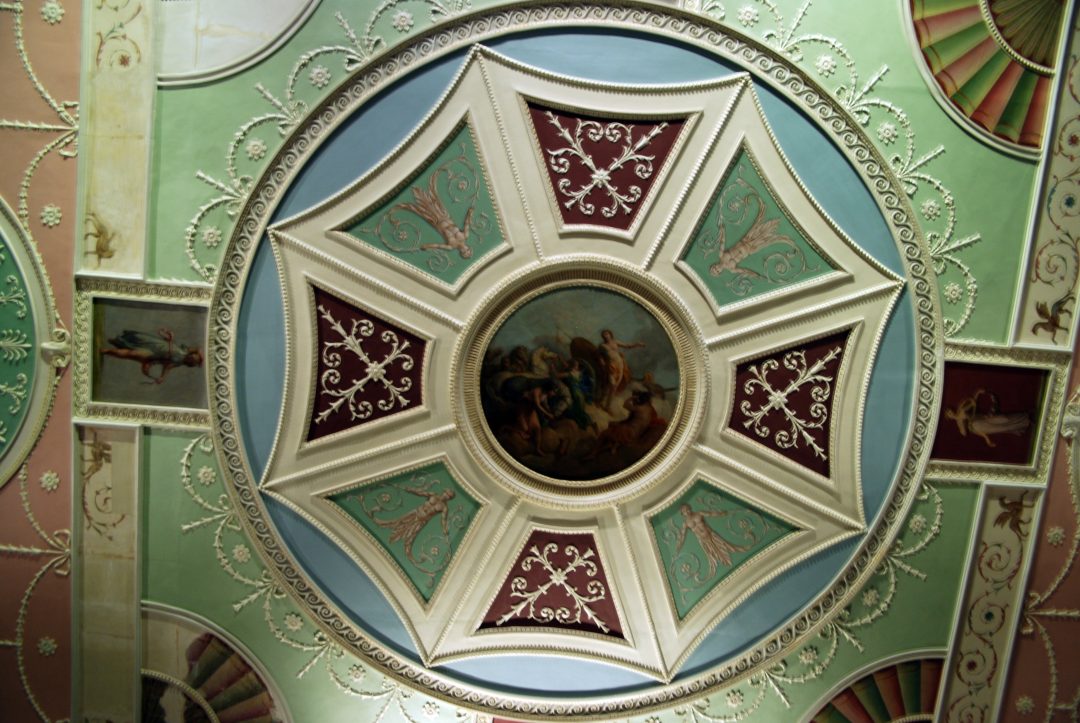
Headfort House
Here is a closeup of the eating parlour in Headfort House which showcases the dentils, waterleaf, entablature soffit, column, capital and a small portion of a picture frame. Headfort House contains the last remaining suite of interiors designed by Robert Adam in the Republic of Ireland.
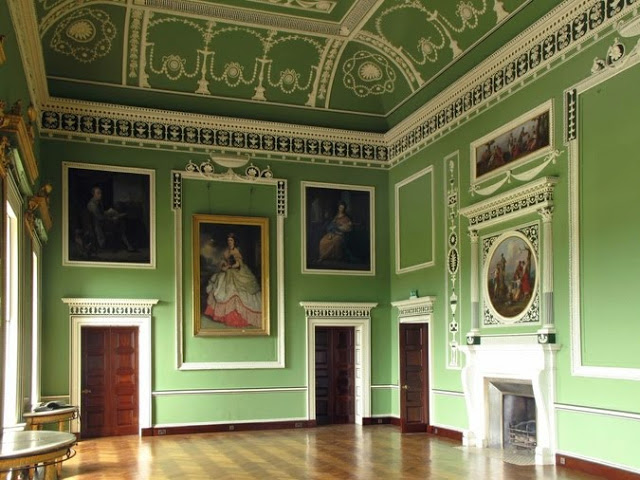
Upholstery and drapes were generally made of silk or velvet and the damask pattern was quite popular.
Hepplewhite, Sheraton and Phyfe
Big names in furniture design were George Hepplewhite, Thomas Sheraton and Duncan Phyfe.
Hepplewhite and Sheraton were English designers. It is believed that neither have pieces of furniture in existence that were attributed to them, but both had pattern books of their designs published.
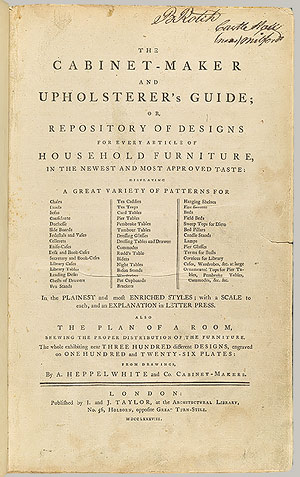
Furniture and cabinet makers were then able to recreate their furniture and eventually spread their designs from England to America and beyond. This is plate 2 found in “George Hepplewhite’s Cabinet-Maker and Upholsterer’s Guide” London, 1788.

This chair is attributed to Samuel McIntire, a notable American architect and craftsman. The vase backed chair is based on a Hepplewhite design, as seen in the drawing above. McIntire added his own flourish by adding carved grape clusters on the legs. The chair is now part of a collection located in the Metropolitan Museum of Art.
Thomas Sheraton, another furniture designer, produced two books of furniture patterns: “Cabinet Maker’s & Upholsterer’s Drawing Book” (1793) and “The Cabinet Dictionary” (1803). This is plate 33 from his first book.
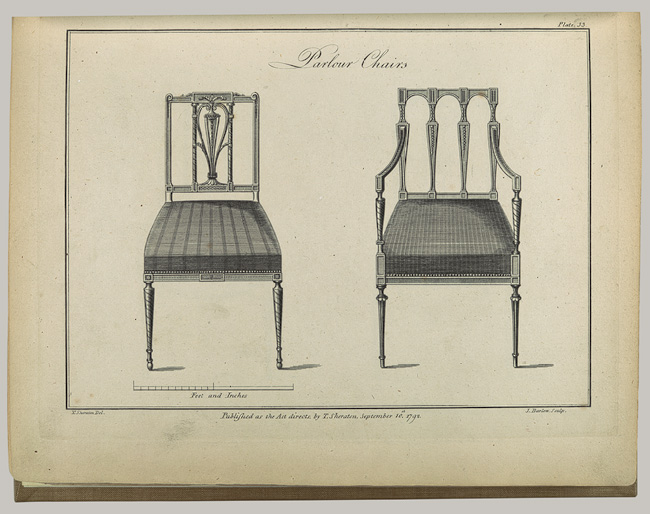
This chair is simply known as the square backed chair. It too is attributed to Samuel McIntire.
This sofa is attributed to Duncan Phyfe, who was born in Scotland, but immigrated to the United States when he was 16 years old. While his early work was influenced by the designs of Thomas Sheraton, the pieces he became famous for were of the French Directoire style and later, the Empire style.

The Green Room
Several pieces of Duncan Phyfe furniture are on display in the Green Room of the White House, which is decorated in a modern day Federal style.
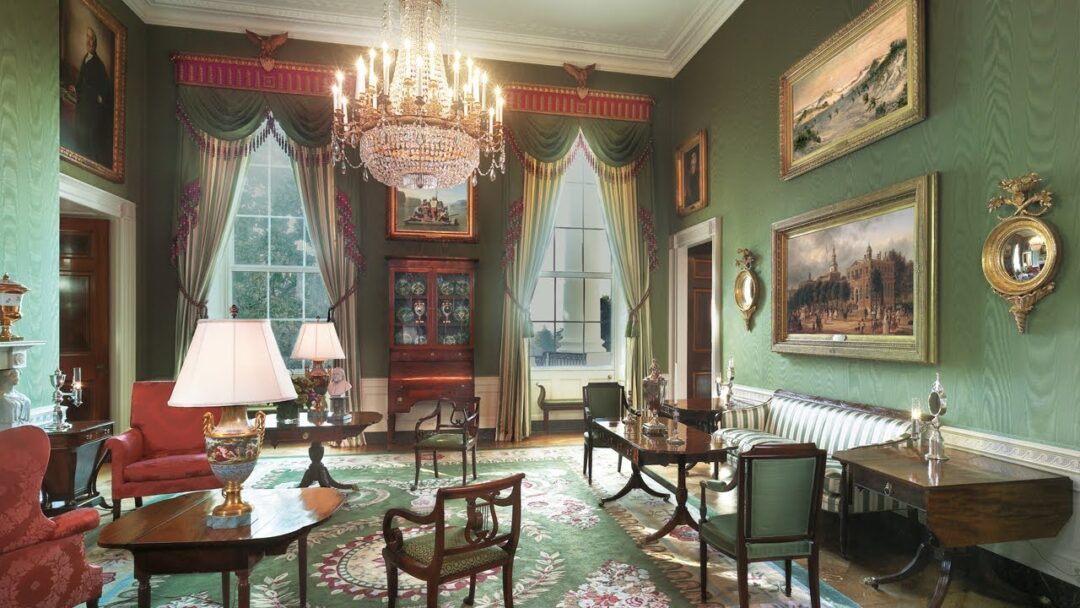
This is a decorative breakfront side table in the style of Robert Adam. It features a marble top, molded and carved freize (carved wood or other decorative medium) and reeded tapering legs. This style of table was/is often used in dining or drawing rooms.
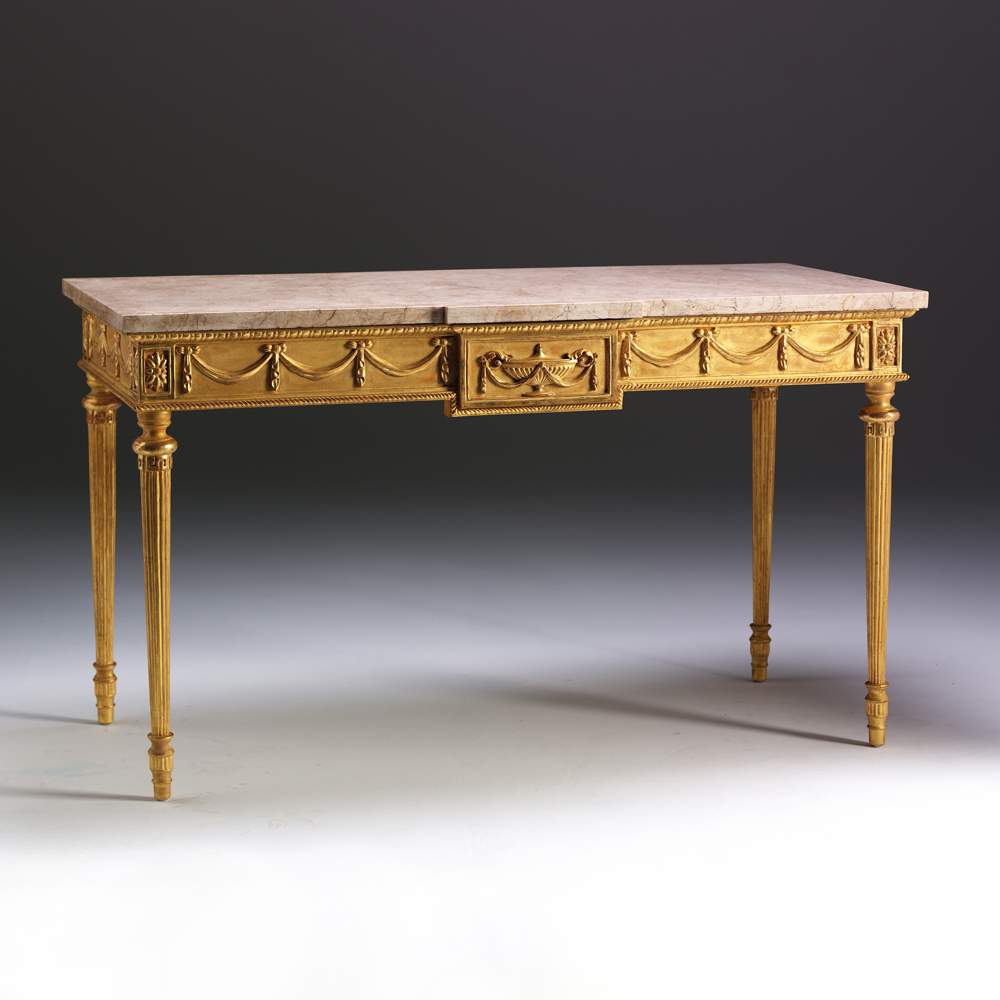
Metalwork
Metalwork was most often done in bronze or brass. This mirror features urns, swags and festoons. They were popular motifs in Federal design.
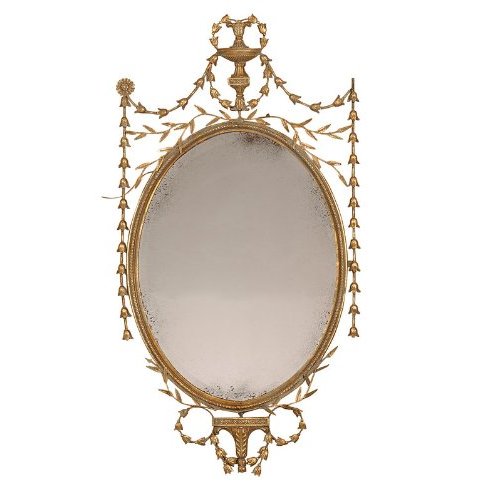
Even everyday objects, such as this wine cooler, were decorated with lavish carvings, metalwork or gilt.
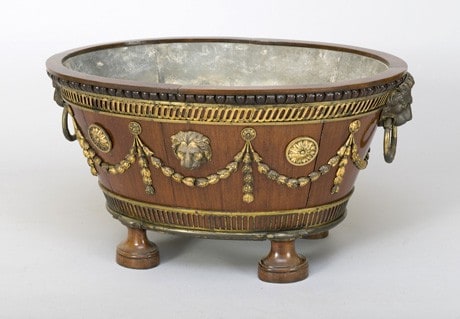
Modern Designers
Federal Style remains ever popular, particularly in areas where colonial era homes are prominent.
Popular designers who are masters of Federal Style are Bunny Williams.

As well as Mario Buatta.
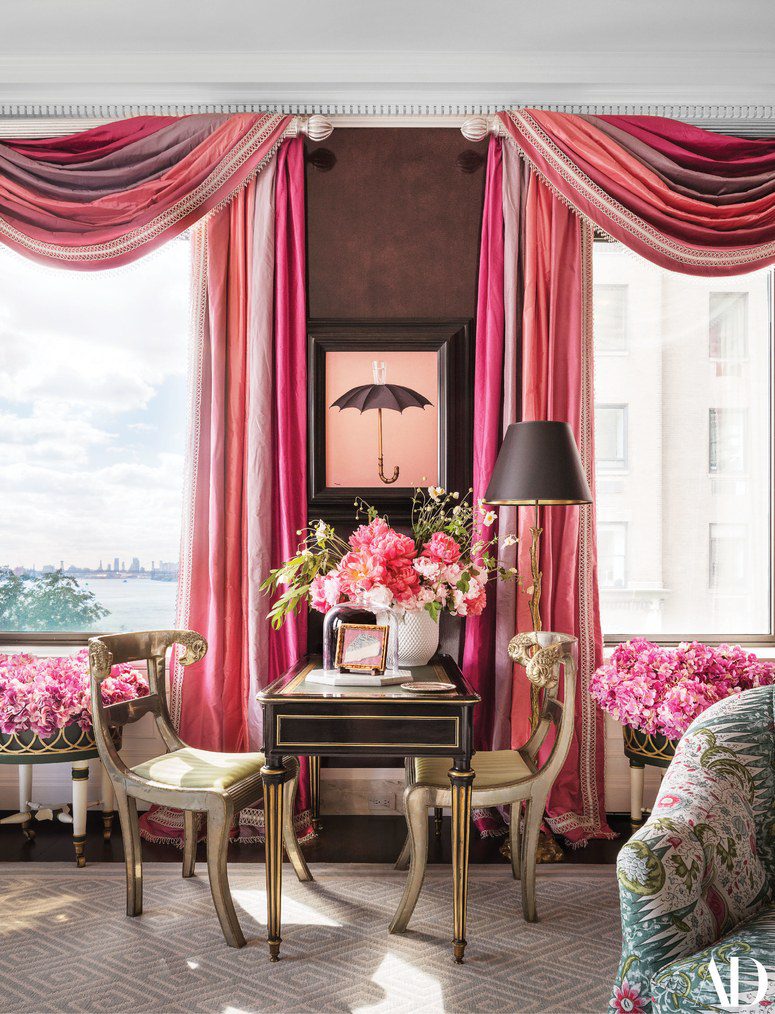
The “Prince Of Chintz” favors the symmetry and elaborate lushness favored in Federal Style.
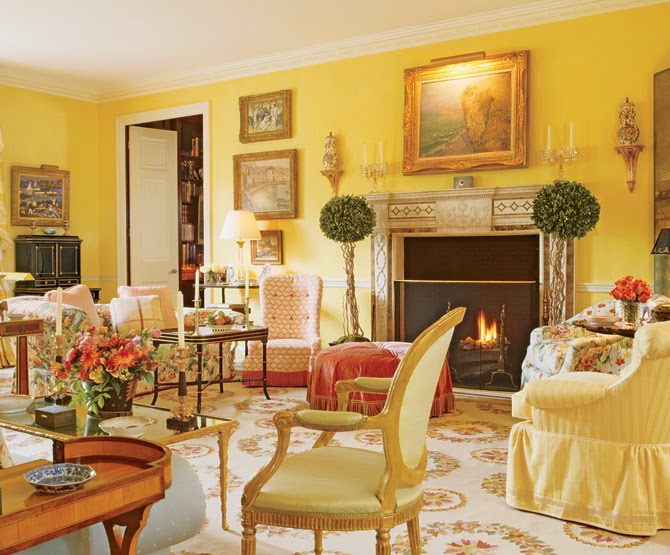
A Few Books
For further reading you will find that many, many books have been written about Robert Adam. Here are a few of the best:

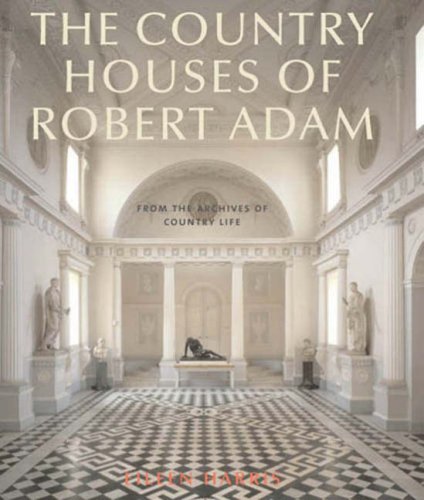
This is a good book on Federal Style.
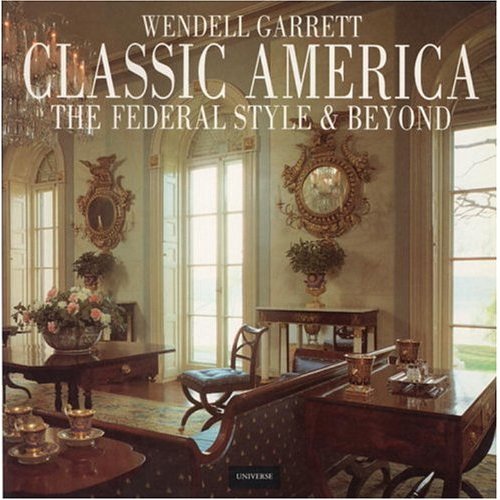
Henrietta Spencer- Churchill is a master of Georgian Style.
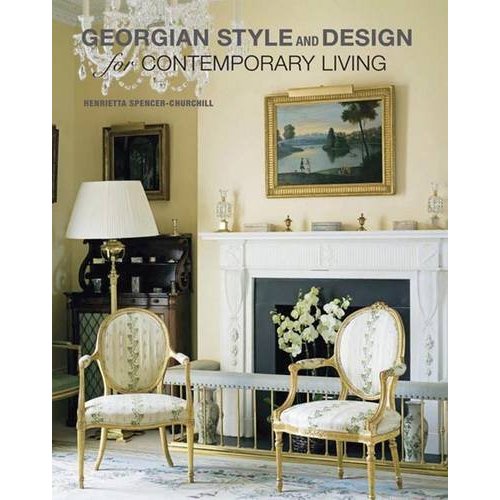
Please let me know if there is any particular style you would like me to research and present.
Laura
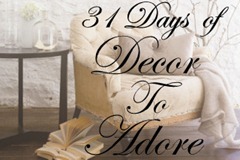
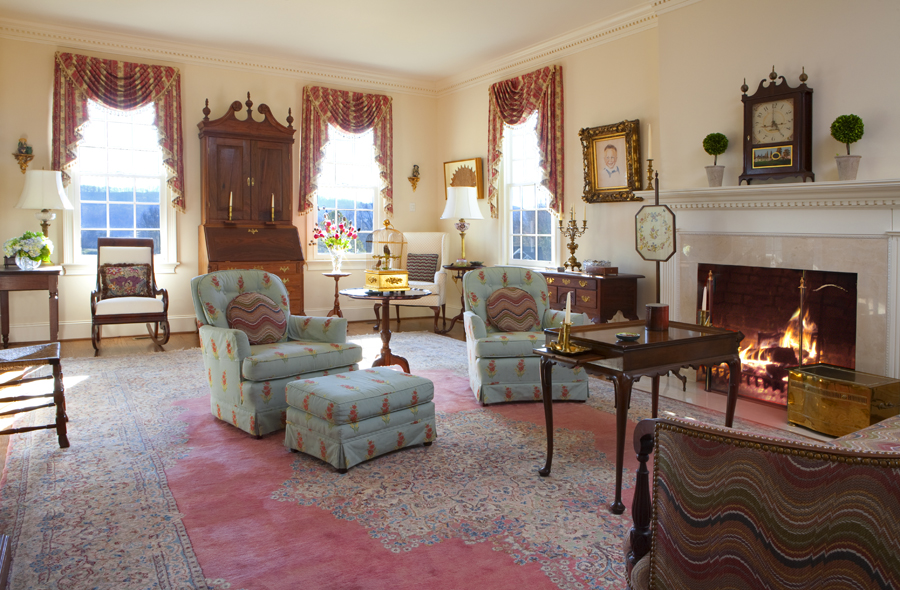
Such beautiful designs and thanks for the info on the books… I will be checking into those! 🙂
Laura,
I can't tell you how much I enjoy reading your blog's series. You have so much knowledge on the subject and it's evident how much research and care you put into each post. I am learning so much! Thank you.
I'll meet you at the Headfort House. It's stunning. I am always intrigued by beautiful ceilings, all the work and time that goes into such details. I especially like Bunny William's blue bedroom, but I must admit the first thing that went through my mind while looking at the bed is “DUST!”
Your Friend,
Deborah
FairfieldHouseNJ.com
GREAT POST, Laura!! I have to say that the Federal style is just about my very favorite. You chose some marvelous pictures to illustrate the style. I had seen Adam ceilings mentioned in some of my reading but had never seen one. Wow! Now I see what all the fuss is about. 🙂
I agree with you about Headfort House, and I just love these two McIntyre chairs, particularly the vase chair.
I'm really enjoying your design series so much. Have a wonderful day!
Denise at Forest Manor
I love all things Georgian! I would love to see a post on Adirondack decor (we call it Muskoka style in Canada). Maureen
Une très riche publication… J'ai appris beaucoup de chose aujourd'hui en vous lisant et j'ai pu admirer vraiment des merveilles…
Merci et gros bisous.
I am very much enjoying your design series but havn't quite found what my design or house would fall into. Frankly, I did not know there were so many categories. I always thought I was a comfortable traditional. Kind of like a less fussy (less rich) Ralph Lauren type style…..Is there such a thing?
Hi Laura, I have a problem deciding on a favorite style for my home, so it is a combination of styles I love. Your post is a wealth of information and oh my I love the photographs. I've strolled through a few times already. We built the home we have, a Colonial style. I'm afraid I haven't been true to the design and the interior looks more traditional. When we travel one of the things I love to do is look for historical homes to tour. I know it must have taken you a while to compile all this info. Thank You, so enjoyed the post.
~Emily
The French Hutch
Greeat job , Laura.
This is my favorite style of all. And I adore Mario Buatta. He is so talented, and his rooms are as lovely as any painting.
XO,
Sheila
I have long liked this style! In a lot of the bigger rooms it seems too “grand” for an average home– though the photo with the wing chairs by the blazing fireplace, in the room with the ceiling beams, looks very do-able! Thank you for posting about it.
great article and great series!!! that bed by bunny just kills me. can you imagine getting to sleep in it each night? must be like a fairytale!!
J
I love all of your research! The illustrations of the chairs are so pretty.